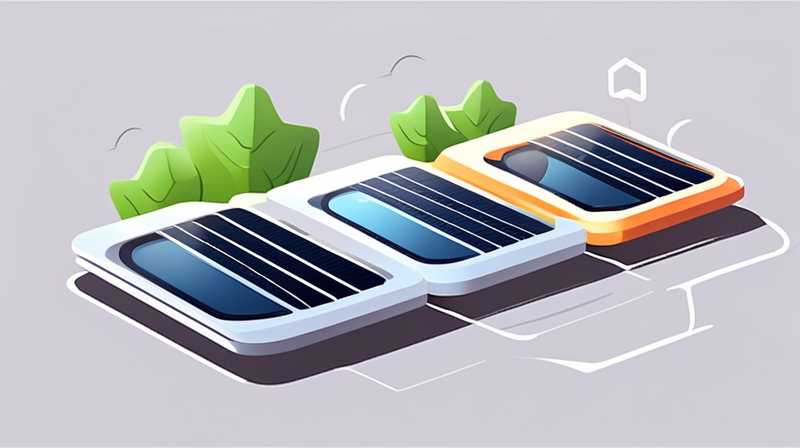
1. The cost of solar descaling varies based on factors like system size and complexity, geographic location, and service provider rates. 2. On average, homeowners can expect to pay between $150 and $500 for a standard descaling service. 3. The complexity of the solar system, including its condition and accessibility, can lead to higher costs. 4. A detailed understanding of the specific system components and potential additional services can help in budgeting for the descaling procedure. Solar descaling is essential for maintaining the efficiency and lifespan of solar heating systems, and understanding its costs can prepare homeowners for necessary upkeep.
UNDERSTANDING SOLAR DESCALING
Solar descaling involves the removal of mineral deposits that accumulate in solar heating systems. These deposits can drastically hinder performance, potentially leading to inefficiencies that decrease energy output. Mineral buildup occurs due to hard water, and without proper maintenance, these deposits can lead to significant operational issues.
The investment in solar descaling is vital, not only to maintain the performance of the system but also to extend its longevity. Regular descaling procedures can prevent costly repairs or replacements in the future. Professionals typically recommend conducting descaling annually or biannually, depending on the local water quality and the specific system’s usage patterns.
FACTORS AFFECTING COST
Several factors significantly influence the overall expense of solar descaling. First, the size of the solar system plays a crucial role. A larger system, or one with more complex plumbing configurations, inherently requires more labor and materials, thus increasing the cost.
Location also affects pricing, as service providers in urban areas may charge more due to higher operational costs. Additionally, travel distances and local competition can influence pricing dynamics. It’s beneficial to obtain multiple quotes from local providers to identify a fair cost based on one’s geographic location.
The condition of the solar system is another critical parameter. Systems that have not been descaled for extended periods may require more extensive work, leading to increased time and monetary investment. The technician may discover additional issues during the descaling process, further complicating the expense.
Moreover, the choice of service provider can dramatically alter the price. Established companies may charge premium rates due to their reputation, experience, and the quality of service provided. Conversely, smaller or newer companies may offer more competitive rates, but it is essential to verify their qualifications and past customer experiences to ensure quality service.
MAINTENANCE PRACTICES
In addition to regular descaling, other maintenance practices can enhance the operational efficiency of solar systems and extend their lifespan. Routine inspections are essential for identifying potential issues before they lead to major failures. These inspections can catch problems like leaks, corrosion, or changes in pressure, allowing for preventative measures to be put in place.
Moreover, by cleaning solar panels and ensuring that they are free from debris or obstruction, homeowners can optimize energy capture. A clear understanding of the system components and how they function is crucial in identifying when maintenance is needed.
DIY maintenance options are available but should be approached with caution. Homeowners should familiarize themselves with the specific requirements of their systems before attempting any self-service measures. Professional maintenance, however, generally guarantees that the work is conducted safely and effectively, ultimately saving money over time.
LONG-TERM BENEFITS
Investing in regular solar descaling pays off by enhancing energy efficiency. Over time, a well-maintained system reduces energy consumption, leading to lower utility bills. Many homeowners observe a significant increase in energy output post-descaling, enabling them to maximize their investment in the solar system.
Additionally, regular upkeep helps preserve the manufacturer’s warranty. Many warranties stipulate that the system must be maintained regularly to remain valid. Failure to follow through with maintenance may nullify warranty claims, leading to further financial loss. Thus, understanding the cost implications of neglect versus proactive maintenance is crucial for any solar system owner.
FAQs
HOW OFTEN SHOULD SOLAR DESCALING BE PERFORMED?
Descaling typically should be conducted at least once a year, but some systems may benefit from more frequent maintenance, especially in areas with hard water. Regular maintenance helps to ensure that mineral deposits do not accumulate, keeping the system working efficiently. Each system is different, so it’s wise to consult a professional who could provide a tailored recommendation based on system performance and local water conditions. This not only aids in maintaining energy efficiency but also prolongs the equipment’s life, ensuring a better return on investment.
WHAT IS INCLUDED IN A SOLAR DESCALING SERVICE?
A typical solar descaling service includes the assessment of the entire system, the use of appropriate descaling agents to remove mineral buildup, and a thorough inspection of all components. Service providers usually check the storage tanks and pipes that might be affected by limescale deposits, along with flushing the system to ensure that all residues are eliminated. This service may also encompass a report on the overall health of the system, advising homeowners on additional maintenance that may be required later and ensuring proactive upkeep.
CAN I DESCAL MY SOLAR SYSTEM MYSELF?
Undertaking solar descaling independently can be risky without proper knowledge and tools. While many homeowners express interest in DIY maintenance to save costs, improper handling can lead to damage to the system, resulting in costly repairs. For optimal results and safety, professionals are trained to use effective descaling agents and to handle the complexities of the system. It’s advisable to weigh the potential cost savings against the risks involved, and when in doubt, consult a qualified technician for assistance.
In summary, grasping the cost of solar descaling is a multifaceted process that necessitates an understanding of various influencing factors. Active engagement in proper maintenance can significantly boost system efficiency and longevity. Choosing the right descaling frequency, understanding what encompasses a professional service, and evaluating maintenance options are fundamental to optimizing solar performance and ensuring reliable energy savings over time.
Original article by NenPower, If reposted, please credit the source: https://nenpower.com/blog/how-much-does-solar-descaling-cost-2/


